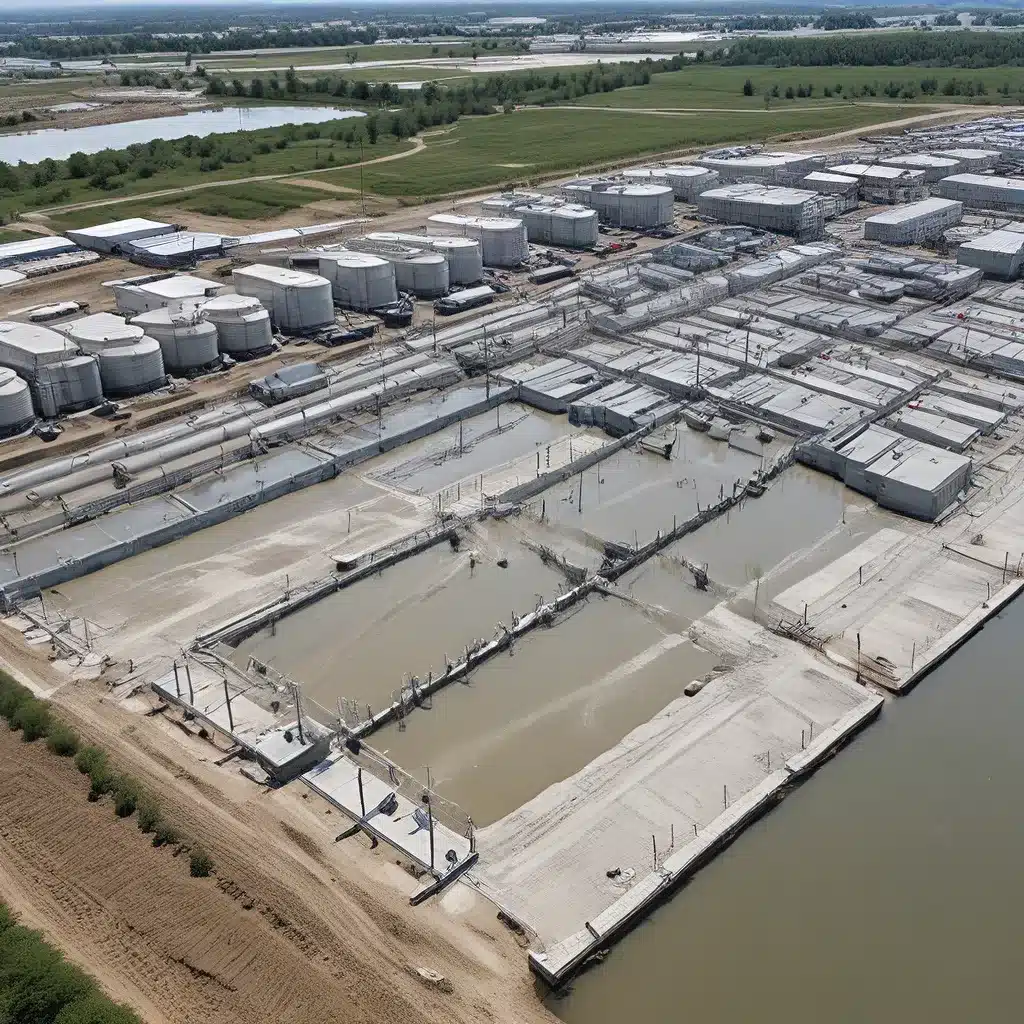
Weathering the Storm: Safeguarding Our Water Supply
As a lifelong resident of this beautiful coastal town, I’ve seen my fair share of extreme weather events. From raging hurricanes that batter our shores to relentless floods that threaten to swallow our homes, Mother Nature has a way of keeping us on our toes. But amidst the chaos, one thing has always remained a constant: our unwavering commitment to ensuring the safety and reliability of our water supply.
You see, our water treatment facilities are the unsung heroes in the fight against natural disasters. These critical infrastructures, often tucked away from the public eye, are the guardians of our most precious resource – clean, drinkable water. And in a world where climate change is amplifying the frequency and intensity of these natural calamities, the need to fortify these facilities has never been more urgent.
Facing the Flood: Strategies for Resilient Water Treatment
In the face of rising sea levels and more frequent extreme precipitation events, our water treatment plants must be prepared to weather the storm, literally. According to FEMA’s guide on nature-based solutions, incorporating green infrastructure like permeable pavements, bioswales, and detention basins can help mitigate the impact of flooding by slowing and storing stormwater runoff. By leveraging the power of nature, we can not only reduce the strain on our treatment facilities but also enhance the overall resilience of our communities.
But it’s not just about building physical barriers; it’s also about optimizing our operational procedures. As the Environmental Resilience Institute at Indiana University suggests, regular training for municipal staff on green infrastructure can equip them with the knowledge and skills needed to assess and implement these nature-based solutions effectively. This, in turn, can lead to more informed decision-making and better-prepared facilities.
Weathering the Storm: Strengthening Critical Infrastructure
Yet, the challenges we face extend beyond just flooding. Extreme winds, for instance, can wreak havoc on our water treatment plants, knocking out power, damaging equipment, and disrupting the delicate balance of the treatment process. To combat these threats, we must look to innovative strategies that go beyond traditional infrastructure.
One promising approach is the use of microgrids, which can provide a reliable and resilient source of power during outages. As FEMA’s Whole Community Approach to Emergency Management suggests, these localized energy systems can help ensure that our water treatment facilities continue to operate even when the broader grid is down.
But the road to resilience doesn’t stop there. We must also consider the potential for cascading effects, where one disaster triggers a domino-like chain of events that can cripple multiple systems simultaneously. By taking a holistic, “whole community” approach to disaster preparedness, as FEMA recommends, we can identify and address these interdependencies, ensuring that our water treatment facilities remain resilient even in the face of complex, multi-faceted threats.
Embracing the Future: Innovative Solutions for Water Treatment Resilience
As we grapple with the realities of a changing climate, it’s clear that our traditional approaches to water treatment resilience may no longer be enough. We need to embrace bold, innovative solutions that push the boundaries of what’s possible.
One such solution is the concept of “water-energy nexus”, which recognizes the inherent connection between water and energy systems. By optimizing the energy efficiency of our water treatment facilities and exploring renewable energy sources, we can not only reduce our carbon footprint but also enhance the overall resilience of these critical infrastructures.
Moreover, the integration of advanced sensor technologies and real-time data analytics can provide water treatment operators with a deeper, more comprehensive understanding of their facilities’ performance and vulnerabilities. Armed with this information, they can make more informed decisions, proactively address emerging threats, and implement targeted resilience measures.
Conclusion: A Future-Proof Water Supply
As we navigate the uncharted waters of a rapidly evolving climate, one thing is clear: the resilience of our water treatment facilities has never been more crucial. By embracing a multifaceted approach that combines innovative infrastructure, optimized operational procedures, and a deep understanding of the interconnected nature of our systems, we can ensure that our water supply remains secure, even in the face of the most daunting natural disasters.
At Inland Waters Inc., we are committed to leading the charge in this critical endeavor. Through our expertise in water treatment and environmental services, we are dedicated to helping communities like ours build a future-proof water supply – one that can weather any storm, no matter how fierce. Join us as we embark on this journey towards a more resilient tomorrow, where our water treatment facilities stand tall as the unsung heroes, safeguarding the lifeblood of our communities for generations to come.


